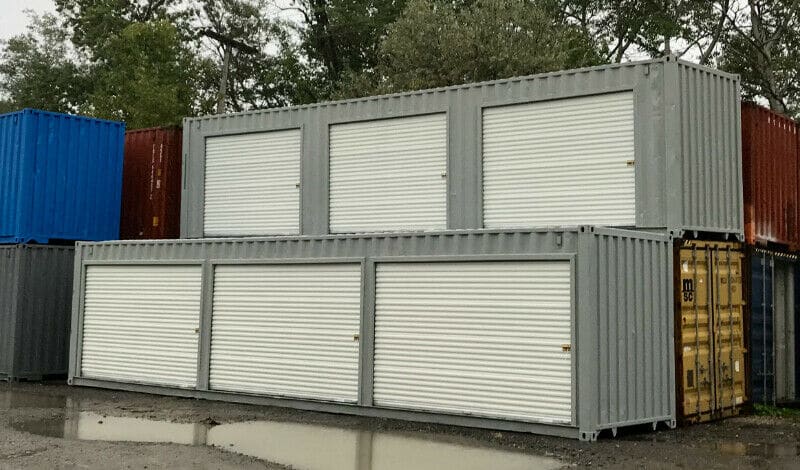The Reasons for the Current Container Shortage
The freight shipping industry is facing unique challenges and a string of events resulting from the pandemic. This has resulted in a shortage of containers around the world, which is affecting the entire supply chain as well as negatively affecting trade and commerce globally.
In the following section we will delve into more details about the issue of container shortage we are experiencing now.
Reasons for Container Shortage
Many of the containers such as 20 feet containers are at cargo ports, within inland depots, and on-board vessel, such as on the transpacific lines. Asia is facing the brunt of this shortage and Europe is also experiencing a deficit.
Reason #1: Bottlenecks in North America
During the pandemic, the lockdown was implemented by many countries, causing economic movement to come to a halt. Due to this reason, many containers remained in the ports they were in at that time.
Moreover, to stabilize expenditure and rates, what carriers did was bring down the total number of containers, used shipping containers, and vessels that were at the sea. Due to a lesser percentage of vessels on the sea, empty containers remained where they were and left to be picked up.
For example, Asian traders were not able to receive containers from different parts of the world, including North America.
Reason #2: Delayed Recovery from Pandemic
The pandemic surfaced initially in Asia and as such, Asian countries recovered before other countries. Countries like China restarted exports well before other countries of the world, while other nations are still facing restrictions, less amount of production, and lower workforce availability.
Workforce disruption had a negative effect on cargo depots, inland transport, and ports. This resulted in a pile-up of containers and shippers faced bottlenecks while getting containers back from North American to Asian countries.
Current statistics show that there is an imbalance of containers in North America. For every hundred containers reaching the continent, only forty are getting exported, and the rest sixty are accumulating.
This is a significant figure considering the fact that the trade route between China and the USA experiences around 900K TEUs (twenty-foot equivalent unit) every month.
Currently, the volume of shipping between the two countries has moved up considerably and is at twenty-three above the previous year’s shipping value.
Reason #3: Lucrative Transpacific Options
In all the shipping routes, the shipping rates are moving up considerably. In addition, freight rates for east-bound containers have increased from the time pandemic started. According to experts, carriers are able to get up to 60 cents for every 40 feet container in the Shanghai to LA route.
On the contrary, the rate is lower than ten cents in the return route. Similarly, the rates are around eighty-eight cents on the Shanghai to Melbourne route. Due to this reason, the pressure is quite high to take the used containers back into Asia and earn more profits on these lucrative routes.
Reason #4: Shrinking Fleet
Adding to the trade imbalances we are experiencing nowadays; another issue is compounding the problem. This problem is the low production rate for new containers. In 2019, the production rate was already going down and the pandemic made the rate go down further due to a sudden drop in demand in 2020.
Moreover, the number of containers that are being scrapped is much higher than the number of new containers that are being manufactured. This has resulted in a serious drop in inventories of standard shipping containers that are suitable for storage or transport.
Experts estimate that container availability will not be reaching normal levels soon and that it will take several months for container manufacturers to meet the demand.
Another negative aspect of this trend is that the limited availability of containers is driving the prices of containers up. This is because manufacturers are aware of the fact that there is more demand compared to the supply of containers in the market.
If you are planning to buy a shipping container, consider leasing one. Although the leasing rates for containers have also gone up by about fifty percent in the last six months, it could still be a more viable option.
Carriers are taking a range of steps to resolve this impasse in the form of a reduction in the detention period and free time. To reduce overall detention time, companies are using better unloading systems. However, these measures cannot realistically improve the situation and we can expect the container shortage to remain the same for some more months. Experts also anticipate contract freight rates to also stay high this year.
Conclusion
As we can see, there are considerable difficulties that the freight industry is facing due to a shortage of containers. The pandemic did not help the already bad situation, and now we are staring at a severe global shortage of cargo worthy containers.
In this situation, it will be necessary to take immediate steps to improve the situation and increase the production of containers. In addition, as the pandemic subsides, the situation is expected to improve. Meaning that the current shortage of container services we are experiencing should not last much longer.
All of these factors have lead freight rates in China to increase by about three hundred percent, however other global routes are suffering from a lack of containers.
It is also estimated that there are almost three containers that are leaving China for every single container that is entering the country.
If you are looking for more information about the current shipping shortage, then give us a call!
You can also call us with any question you have about:
- The shipping container dimensions we offer
- Which container is ideal for storage units?
- How many high cube container shipping containers we have for sale?


